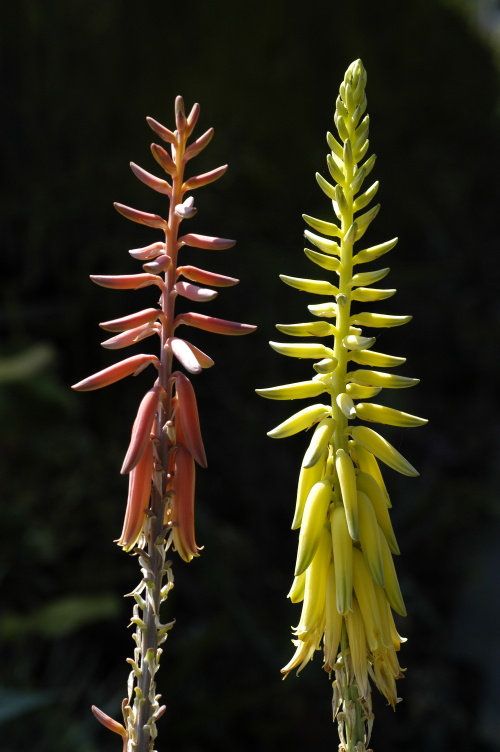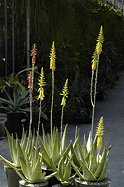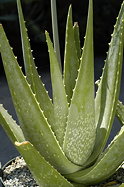In the March–April, 2000 issue of this Journal, Lavranos and Collenette published the provisional name A. vulcanica on the basis of a single plant growing in the Taif Wildlife Research Center, Saudi Arabia. It was reported to have been collected from the black lava field near Barzah. It was suggested that a population noted from the air in a lava field some 200 km to the NW might consist of plants of the same species. Field work did not bear this out, as the species was not located at the Barzah lava field. The plant forms very attractive solitary rosettes of broad, glaucous green leaves attractively spotted with white. It is treated here as a cultivar. The original plant set seed, apparently self-pollinated, that was sent to the Huntington via Seymour Linden. The flowers were not seen but were reported to be yellow. The plants we grew proved to be quite uniform, and when they reached maturity, most produced yellow flowers with a small percentage producing red flowers. We offer HBG 98580, second generation seedlings from controlled pollination of the original batch, which were grown from seed (S. Collenette 7847) of the original plant. $10.
Like the original, self-fertile parent plant, most of its progeny produce yellow flowers. The small percentage of red-flowered offspring are here designated Aloe ‘Vulcanica Red’.
Correction, published in the Cactus and Succulent Journal Vol. 83 (2), March - April, 2011
According to Tom McCoy, Aloe ‘Vulcanica’ appears to be merely a garden hybrid of A. armatissima. In addition, the original publication of A. vulcanica Lavranos & Collenette lacked a Latin diagnosis and citation of a type specimen and is therefore invalid. A. ‘Vulcanica’, therefore, is also invalid as a Latinized cultivar name. In view of this, plants distributed as ISI 2009-15 should be referred to as “A. armatissima hybrid.”

Published in the Cactus and Succulent Journal, Vol. 81 (2), March - April, 2009


